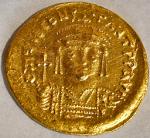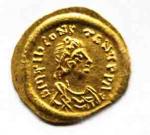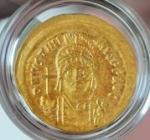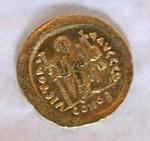Summary (English)
PERISTERA (Boni Petrunova – boni_boon@abv.bg, Dimitar Pavlov, Elena Vasileva) Peristera had a citadel, an inner town and a suburb, situated ove an area of c. 1.5 ha. The fortification walls of the citadel and the inner town were documented. Part of the suburb was probably situated under the present-day town of Peshtera. The wall of the citadel had one triangular and three rectangular towers and two towers with layouts of single-nave churches situated in the northeastern and the southeastern corner. The northeastern tower probably functioned as a church with an apse 3 m deep and a nave 7.20 m wide and 14.10 m of its length discovered so far. Fragmentary frescoes, fragments of marble vessels for holy water and roof tiles with incised crosses were discovered in the church – tower. The northern gate of the citadel was reconstructed at least twice. A rectangular tower, 11.30 m long, was built in the beginning of the 6th century AD and the fortification gate was narrowed to 85 cm in width, flanked by two pilasters and situated on eastern wall of the tower. A mantle of stones and a second wall, 1.70 m in width, were constructed over the outer face of the tower. Thus, the total width of the fortification wall in this part of the citadel became 3 m. Mediaeval sherds and a coin of the 13th century were found in the northern part of the citadel. The finds from the excavations included an open-work bronze fibula showing a labrys of the 3rd century AD, a bronze fibula of the Dacian Type of the end of the 5th – 6th century AD, a gilded bronze belt appliqué of the 2nd – 6th century AD, a bronze finger-ring with a plate showing two shaking hands of the 3rd – 6th century AD, and a bronze herma from a small toilette box of 3rd – 6th century AD. The fortified settlement was burned during the Slavic invasions in AD 582. The gold coins of Tiberius II Constantine minted in AD 579 – 582, which originated from the hoard consisting of nine solidi and six tremisses, were terminus post quem for the destruction of Peristera.
- Boni Petrunova - National Museum of History
- Dimitar Pavlov - Museum of History – Peshtera
- Elena Vasileva - Archaeological Institute with Museum
Director
Team
Research Body
- Archaeological Institute with Museum
- Museum of History – Peshtera





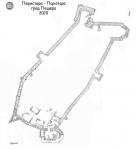
![Download [PDF]](/excavation/skins/fasti/images/results/download_sml.png)



